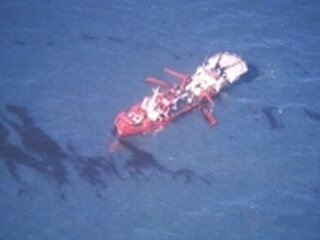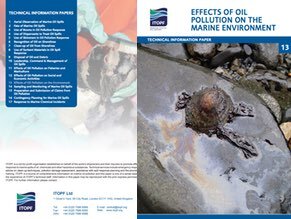Documents & Guides
Explore a variety of topics about marine spills, response and compensation matters in the pages below.
Each topic and area of interest provides access to more detailed documentation that is freely downloadable.
This includes our 18 Technical Information Papers which are fully illustrated with photos and diagrams and are available in several languages.
Alternative Fuels
What are the emerging alternative fuels and their associated risks, hazards, damages and liabilities?
Compensation for Ship-source Marine Oil Spills
What legal arrangements and sources of compensation are available for a spill from a ship?
Disposal
What planning and waste management systems need to be put in place to reduce the volume of oily waste for treatment or disposal?
HNS
What are the specific chemical response strategies for responding to a Hazardous and Noxious Substance spill, and what are the potential effects on human and marine life?
Contingency & Response Planning
What information is needed for an effective oil spill contingency plan? How can aerial observation and protective strategies assist with response operations?
Economic Effects
Which industries might suffer temporary economic losses and loss of market confidence?
Fate of Oil Spills
What happens to oil in the marine environment over time when spilled at sea? How do different factors such as volume and physical and chemical properties affect the fate of oil spills?
Explore the Resources
Displaying results 11 to 14 out of 14
- « Previous
- 1
- 2
The Sea Empress oil spill: Environmental impact and recovery (1999)
72.000 tonnes of light crude oil were released from the Sea Empress at the entrance to Milford Haven, South Wales over a 7 day period in February 1996, in an area of exceptional environmental value for wildlife, tourism and natural beauty. Natural factors coupled with effective clean-up at sea and on shore, minimised environmental impact.
Categories: Environmental effects, Spill Response, Papers
TIP 14: Sampling and monitoring of marine oil spills
This paper provides a broad overview of the monitoring and sampling procedures that can be used for qualitative and quantitative monitoring of oil contamination. While qualitative analyses can confirm the source of oil contamination, monitoring programmes are often concerned with the quantitative changes in hydrocarbon levels over time. Guidance on analytical best practice is given and common terminology is explained. However, the techniques and observations required to monitor specific ecological or biological effects and to monitor contaminants in the air are beyond the scope of this paper.
Categories: Environmental effects, Planning & operations, Technical Information Paper (TIPS)
TIP 13: Effects of oil pollution on the marine environment
This paper describes the effects of ship-source oil spills and resultant clean-up activities on marine flora and fauna, and their habitats. Particular attention is devoted to discussing the complex interactions between oil and biological systems, which have been the subject of diverse studies over many years. Separate ITOPF papers consider the specific effects of oil on fisheries and mariculture and on wider human activity.
Categories: Environmental effects, Technical Information Paper (TIPS)
TIP 11: Effects of oil pollution on fisheries and mariculture
This paper describes the effects of ship-source oil pollution on fishing and mariculture and provides guidance on response measures and management strategies which may help to reduce the severity of oil spill impacts. Damage to other economic resources is considered in a separate Technical Information Paper.
Categories: Environmental effects, Economic effects, Technical Information Paper (TIPS)
Displaying results 11 to 14 out of 14
- « Previous
- 1
- 2




